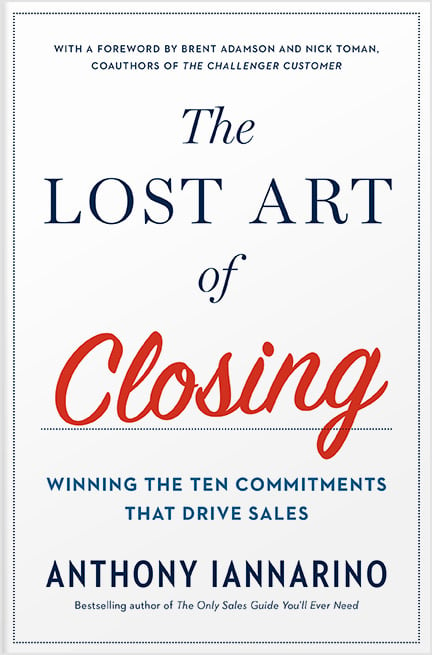The Gist
- B2B sales has new challenges that we must learn to overcome.
- Meeting these new challenges will require new skills and competencies.
- Both the challenges and skills move us towards a modern sales approach, one that creates more value for our clients.
The challenges of professional selling have changed, making it more difficult both to create new opportunities and to win new clients. Many B2B buyers mistakenly treat their decisions as if they were B2C, believing that the information they find online is not only reliable but can replace time spent with a professional. This is like treating WebMD as if it were your actual doctor.
A great deal of these challenges stem from our increasingly complex and uncertain world. When you are uncertain of the future it is difficult to commit to change, and making no decision feels safer than making a poor choice about an important decision—especially if the next round of changes may render your choice moot. In sales, two factors distinguish “complex” decisions from their routine counterparts. First, a complex decision has a high level of importance to a future result. Second, the contacts making the decision make similar decisions so infrequently that they struggle with the process.
You’ve probably seen this pattern in your own experience: uncertainty can make it hard to even start making a decision, and adding more information doesn’t always make it easier to move forward. To make this process smoother for your prospective clients, here are four common challenges in modern B2B sales, along with the skills you must develop to address them.


Challenge #1: Getting a meeting
Skill #1: Confidently trading value for time
It has never been easy to get a meeting, especially with the contacts that work for your dream client. One of the reasons people reject meeting requests is because they are already overwhelmed with work. More and more, the technologies that were designed to increase our efficiency and buy back our time end up creating an endless workday, with emails flooding our inboxes, not to mention the constant asynchronous communications.
But no matter how busy your contact is, the main thing keeping them from gifting you their time is their concern that you’ll just waste it. Every person you call on has survived sales meetings where an unprepared salesperson gobbled up their time and gave nothing in return. You and I are paying for the sins of the bad salespeople who have called on our once-bitten-twice-shy prospects.
When your client is worried about your wasting their time, you must improve your ability to trade value for time. This is why when you say “is now a good time” or “is now a bad time,” you hear your contact groan. You’ve already identified yourself as a time waster and not a value creator. The agenda you offer has to include some promise that your contact will gain something from the meeting—even if they don’t buy from you.

Challenge #2: Create value and an excellent PCX (prospective client experience)
Skill #2: Transferring your insights to your client
Your client will evaluate every sales call based on how much they valued the conversation. You can think of this as their “prospective client experience,” perhaps the most important factor when it comes to creating and winning new opportunities. A poor experience will likely doom your chance of winning the client’s business. But an experience that leaves the client in a better position than they had before your sales call will motivate them to keep working with you, allowing you to keep helping them pursue the better results they need.
If your client knows as much or more than you do about the decision they need to make and the new course of action necessary, you can’t create any value for them. And refusing to demonstrate your knowledge is just as bad as having none at all: the idea that one should not provide “free consulting” is a poor strategy in the 21st century, one that is dominated by the internet.
To match this challenge, sharpen your ability to provide your contacts with what we might call “how to buy” insights: the kind that help them understand the nature of their challenge, the factors they need to assess during their decision, what the right solution needs to include, and how to pursue better results. This skill requires transferring your insights and providing your contacts with your expert perspective.


Challenge #3: Gaining access to the organization
Skill #3: Building consensus
While it always stings to lose an opportunity to your low-priced competitor, the worst thing to hear a client say might be “I’ll be the only person you need to meet with” or “I’ll be the one making this decision.” The idea that a single person is going to make a decision for an organization, without even including the people who are going to be impacted by the decision, is not simply impractical but impossible in the 21st century. When your world is marred by complexity, going it alone around an important decision not only doesn’t work but guarantees that you won’t be able to execute the solution.
The challenge of gaining access to the organization is complicated by a couple of things. First, you need access to the people who are going to have a say in any significant decision, including those who will be influenced by that decision. Second, and maybe more problematic, no one knows everyone who needs to be included, including your main contacts.
To help solve this problem, you need to combine several skills: identifying the stakeholders, gaining access to them, and helping your clients build consensus. In this case, you trade value for the commitment to bring in other stakeholders by helping your contacts understand the value of consensus, improving their chances of moving forward with a new initiative, and eventually producing the better results they need.

Challenge #4: Resolving real concerns
Skill #4: Collaboration and problem-solving
One of the problems with legacy approaches to sales is that they treat real concerns like objections. An objection is a statement that hides a client’s real concern as a way to prevent them from making a commitment. Much of the time now, deals stall because they feature conflicts and decisions that are plagued by concerns, hindering the certainty a client needs to move forward. When a client has a real concern, leaving it unaddressed will end in a stall, a no-decision, or a loss to a competitor who resolved that concern.
To avoid that outcome, you need to identify and elicit the client’s real concerns so that you can address them. In a lot of cases, that means collaborating with the client to solve some problem that prevents them from securing the certainty they need to move forward, a situation where simply handling objections won’t do.
Do Good Work:
- What value do you trade for a meeting?
- How do you create a competitive advantage in the sales conversation?
- What can you do to improve your skills at securing consensus?

Essential Reading!
Get my 2nd book: The Lost Art of Closing
"In The Lost Art of Closing, Anthony proves that the final commitment can actually be one of the easiest parts of the sales process—if you’ve set it up properly with other commitments that have to happen long before the close. The key is to lead customers through a series of necessary steps designed to prevent a purchase stall."
Buy Now







.jpg?width=768&height=994&name=salescall-planner-ebook-v3-1-cover%20(1).jpg)


